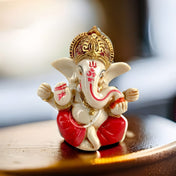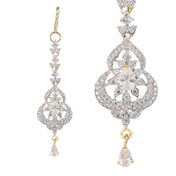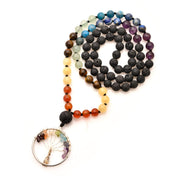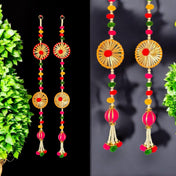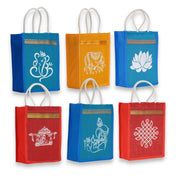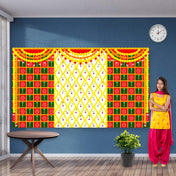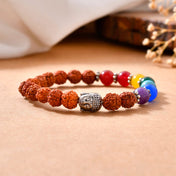Introduction
Jewelry made from silver alloys has always been loved for its beautiful shine and timeless charm. Among these alloys, German silver and sterling silver are two popular options that offer elegance and durability. While sterling silver contains a high amount of pure silver, German silver provides a different choice that resembles silver but has a different composition and character.
When selecting the right silver alloy jewelry, it's important to understand the subtle yet significant differences in appearance, weight, and maintenance requirements. German Silver is an affordable and resilient option that still maintains its visual appeal and cultural authenticity. Its unique combination of metals gives it a bright and shiny finish similar to fine silver, making it a desirable choice for both traditional and modern designs.
Consider exploring German Silver pieces for your next purchase. They offer benefits such as increased durability, lighter weight, and versatile styling—qualities that can elevate your jewelry collection beyond ordinary expectations.
Understanding German Silver: The Alloy That Looks Like Real Silver But Isn’t
Definition and Origin of Silver Without the High Price - German Silver
German Silver, also known as nickel silver or alpaca silver, is a metal alloy that does not contain any actual silver. It is composed of 60% copper, 20% nickel, and 20% zinc. Originally developed as an affordable alternative to precious silver, German silver has been used in jewelry and decorative items for centuries.
Historical Background of the Name "German Silver"
This unique alloy's blend of metals creates a distinctive aesthetic that appeals to those seeking the look of silver without the higher cost associated with pure silver products. The German silver jewelry & homeware available today showcases exquisite designs while remaining stylish and affordable.
Appearance of Silver
German silver has a bright and lustrous appearance with a cooler undertone that closely mimics the look of fine silver. Its elegant shine makes it a popular choice for jewelry and accessories. For instance, the Indian German silver pooja thali set is a beautiful representation of this alloy's charm. Similarly, the minimalist german silver incense stick holder demonstrates its practical use in home décor.
Comparing German Silver and Sterling Silver: Key Differences

Understanding the distinct characteristics between German Silver and Sterling Silver helps in making an informed choice for your jewelry collection.
1. Composition of the Metals Unlike Substitute for Silver
Sterling Silver consists of 92.5% pure silver combined with 7.5% copper. This precise ratio enhances durability while maintaining the classic silver sheen. Authentic sterling pieces often carry a hallmark "925", certifying their purity and quality. On the other hand, German Silver contains no actual silver but is instead made up of nickel, zinc, and copper. As a result, it does not bear any hallmark stamps indicating authenticity.
2. Physical Properties of German Silver Products
German Silver stands out with its greater hardness compared to sterling, lending itself well to intricate designs that require structural resilience. Although visually similar to sterling, it is 20-30% lighter, which adds comfort during extended wear. For instance, you can explore various German silver nose pins that are designed for comfort and style.
3. Tarnish Resistance Aspects of German Silver
Sterling Silver’s copper content makes it prone to tarnishing over time, requiring regular maintenance to preserve its shine. In contrast, German silver exhibits higher resistance to tarnish due to its nickel and zinc composition, keeping its bright, lustrous appearance longer without frequent polishing.
4. Applications and Versatility Appeal of German Silver
The unique properties of each metal make them suitable for different applications. Sterling silver is often preferred for fine jewelry pieces such as rings and necklaces, where its softness allows for intricate detailing. However, German silver's hardness makes it an excellent choice for items that require durability and strength, such as screw lock nose pins or designer bottle openers. This contrast in metal hardness, weight, hallmark presence, and tarnishing behavior highlights why many appreciate German Silver for its durability and ease of care—looking like silver but different in performance and practicality.
Looking Like Silver, But Different: The Benefits of Choosing German Silver Items Without the High Price Tag

1. Durability Advantages
German Silver offers excellent scratch and impact resistance, making it ideal for everyday wear without easily showing signs of wear and tear.
2. Cost Effectiveness
Due to lower raw material costs and efficient production processes, German Silver jewelry tends to be more budget-friendly compared to Sterling Silver or other precious metals.
3. Lightweight Nature
The lightweight characteristic of German Silver makes it comfortable for prolonged wear, ensuring that your jewelry feels effortless on the skin.
4. Versatility in Finishes
German silver can be finished in various ways such as high polish, brushed, or matte, allowing for a range of design possibilities. Its adaptability suits both traditional and contemporary styles seamlessly. By considering the durability, affordability, lightweight nature, and design versatility of German Silver items, you can elevate your jewelry collection with pieces that not only exude elegance but also stand the test of time in terms of both style and quality.
Why LoveNspire Uses German Silver in The Ethnic Collection?
LoveNspire craftsmanship celebrates a rich heritage by incorporating German Silver as a core material, reflecting the brand’s commitment to cultural celebration and authentic ethnic products. This choice aligns deeply with brand's mission: to enrich lives through diverse cultural expressions, using traditional materials that honor history while appealing to modern sensibilities.
The extensive product range spans from exquisite jewelry pieces to elegant home décor, each crafted with meticulous attention to detail. Every item showcases handcrafted quality, emphasizing authenticity that resonates with those who appreciate genuine artistry. German Silver’s versatility allows artisans to create intricate designs that blend traditional motifs with contemporary aesthetics, making each piece a timeless treasure.
Personalization plays a vital role in LoveNspire’s offerings. Customers can customize jewelry and décor items, ensuring their purchases are not just accessories but meaningful extensions of identity and heritage. These bespoke options foster emotional connections and celebrate individuality within the broader framework of cultural appreciation.
Our dedication to authentic ethnic products powered by German Silver exemplifies how tradition and innovation intertwine—preserving legacy while inspiring new stories through every handcrafted creation.
Addressing Concerns About Nickel Sensitivity in German Silver Jewelry Products

German silver jewelry, known for its durability and affordability, is an excellent choice for those who love fashion accessories. However, a common concern among potential buyers is the presence of nickel in these products, which can cause allergic reactions in some individuals.
Understanding Nickel Allergy in the Context of the Popularity of German Silver
Nickel allergy is a type of contact dermatitis that occurs when the skin comes into direct contact with nickel-containing items. This can include jewelry, watches, and even certain clothing fasteners. For individuals with this sensitivity, wearing such items can lead to uncomfortable symptoms like itching, redness, and swelling.
Prevalence of Nickel Sensitivity Due to Widely Used in the Production of German Silver
It's estimated that around 15% of the population worldwide has some degree of nickel sensitivity. This means that while many people can wear nickel-containing products without any issues, there is a significant portion of the population that may experience adverse reactions.
We understand these concerns and prioritize the comfort of our customers. Our German Silver jewelry is crafted with care, and we strive to minimize the risk of allergic reactions by using high-quality materials.
If you have a known nickel allergy or sensitivity, we recommend taking precautions when wearing any type of jewelry. Here are some tips:
- Choose hypoallergenic options: Look for jewelry made from materials such as titanium, surgical stainless steel, or gold.
- Limit exposure: If possible, avoid prolonged contact with nickel-containing items.
- Consult a dermatologist: If you're unsure about your sensitivity or need advice on managing it, seek professional guidance.
By being proactive and informed about your skin sensitivity, you can enjoy wearing beautiful jewelry without compromising your comfort.
Making an Informed Choice Between German Silver and Sterling Silver: What You Need to Know Before Buying Jewelry Items from Either Category!

When it comes to choosing jewelry, the type of metal used can greatly impact both the look and wearability of the piece. Two popular options are German Silver and Sterling Silver. While both may have a similar appearance, they have distinct differences that can affect your decision.
Consider Your Lifestyle Needs
Before making a choice between German silver and sterling silver, it's important to consider your lifestyle needs. Ask yourself the following questions:
- Am I allergic to certain metals?
- Do I lead an active lifestyle that may cause wear and tear on my jewelry?
- Will I be wearing this piece daily or only on special occasions?
By understanding your lifestyle requirements, you can make a more informed decision about which metal will best suit your needs.
Take Sensitivities Into Account
If you have any known sensitivities or allergies to certain metals, it's crucial to factor this into your decision-making process. While Sterling Silver is generally hypoallergenic, some individuals may still experience reactions due to the presence of other alloys used in its composition. On the other hand, German Silver does not contain any nickel or other common allergens, making it a suitable alternative for those with metal sensitivities.
However, keep in mind that individual reactions can vary, so it's always best to test a small area of skin before committing to wearing any new jewelry regularly. By taking both your lifestyle needs and sensitivities into account, you can make an informed choice between German Silver and Sterling Silver that aligns with your personal preferences and requirements.
Conclusion
In conclusion, German Silver stands out for its unique properties and affordability compared to Sterling Silver in jewelry crafting. Its durable nature and versatile finishes make it an appealing choice for those looking for exquisite pieces that combine tradition with contemporary designs.
Consider German Silver for your next jewelry purchase and appreciate the beauty of this alloy that resembles precious silver but is much more affordable.
Let your accessories showcase a story of skilled craftsmanship and cultural importance, connecting the past with the present through each carefully selected piece. By wearing German Silver, you not only enhance your appearance but also pay tribute to the rich heritage behind every intricate design.










